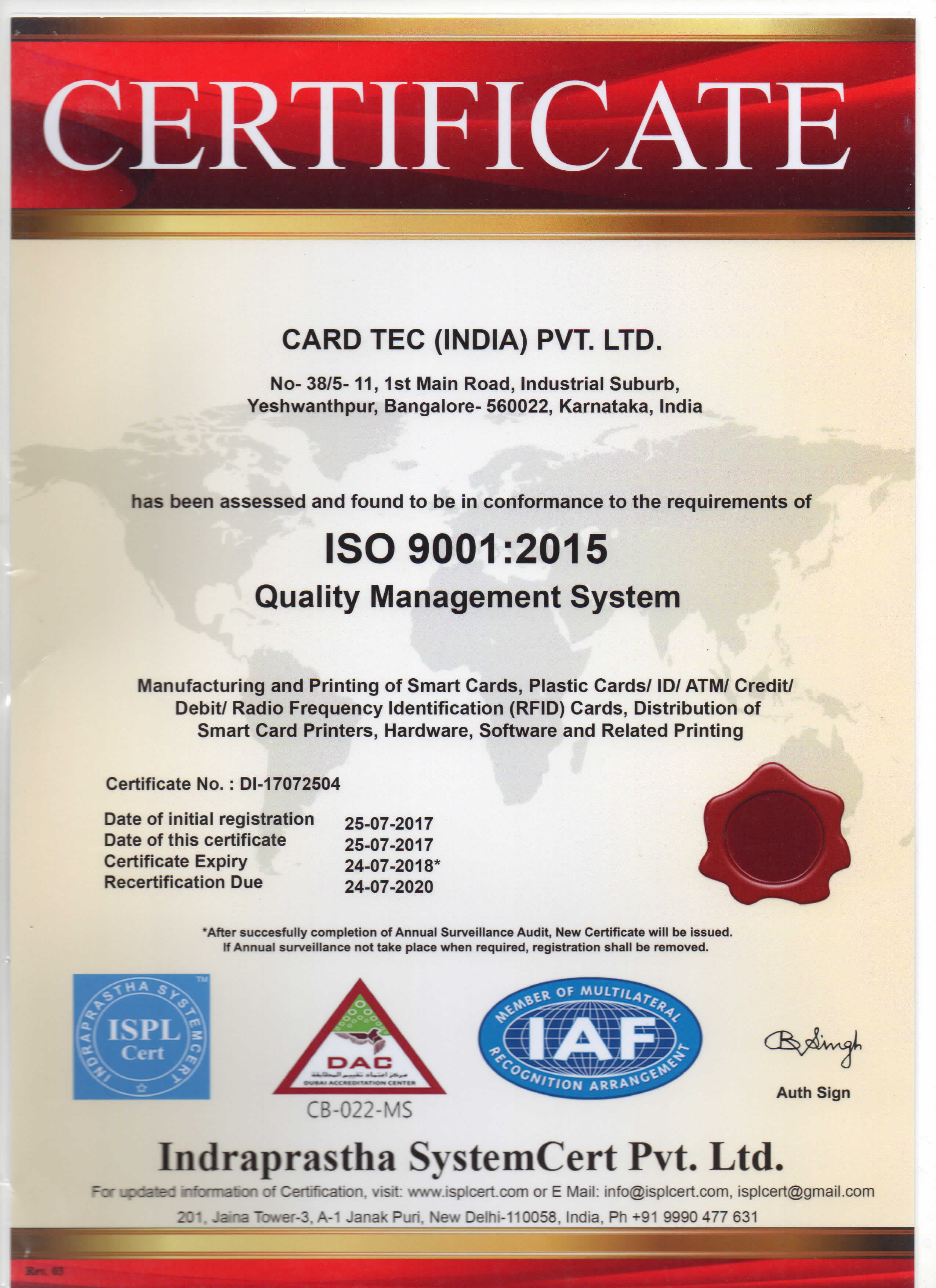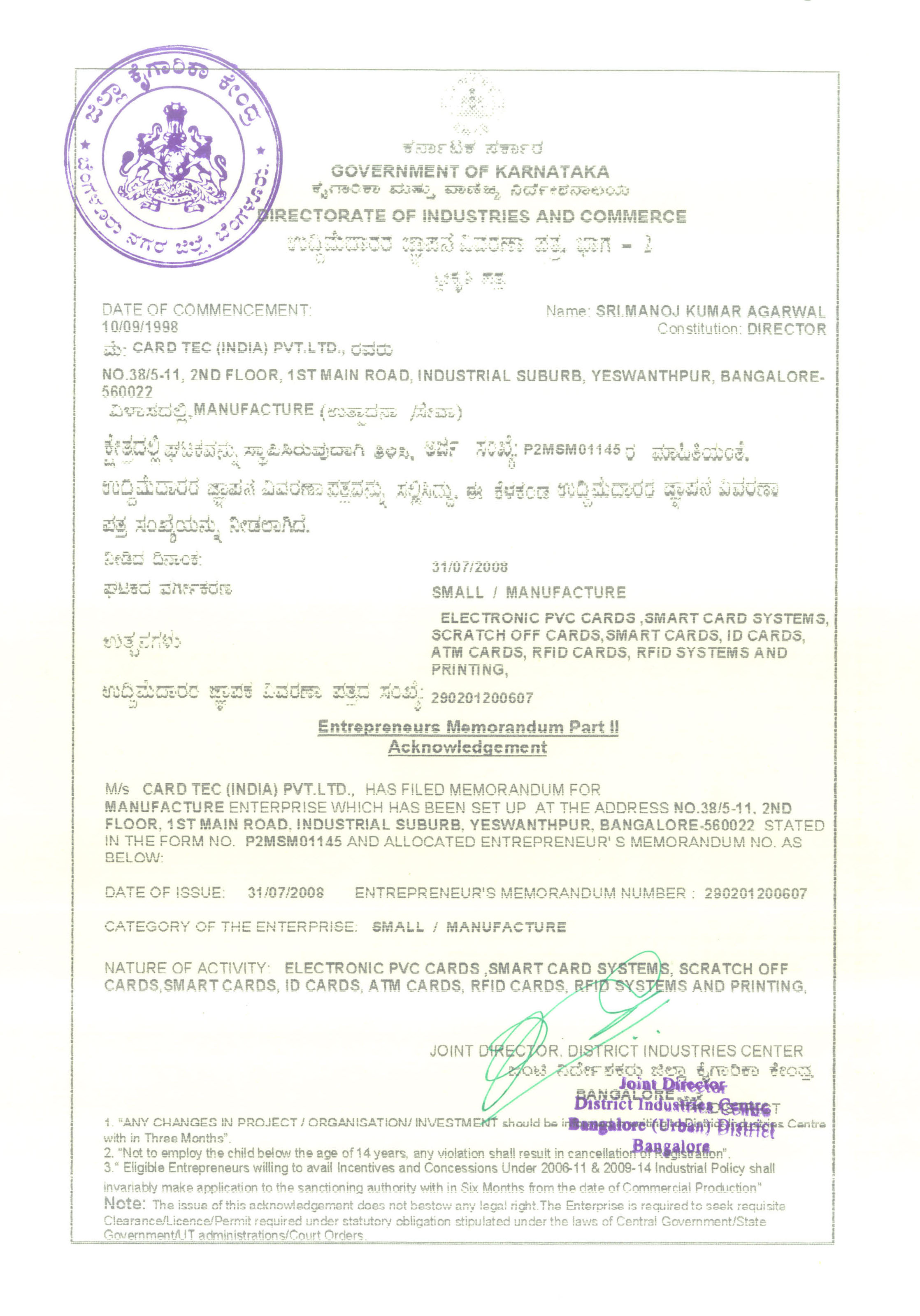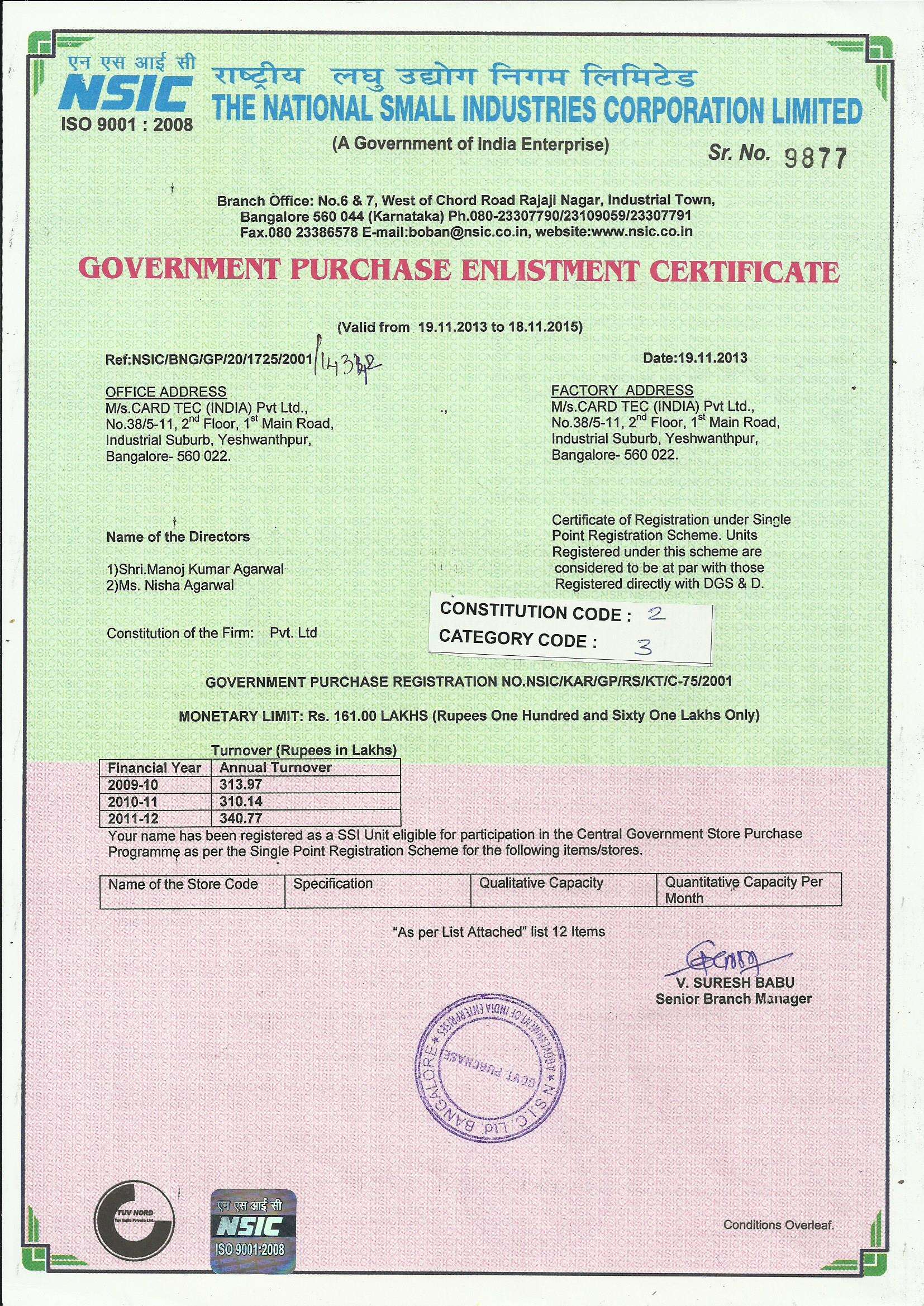Chip Cards or Contact smart cards

Chip Cards or Contact smart cards:
Contact smart cards have a contact area of approximately 1 square centimetre (0.16 sq in), comprising several gold-plated contact pads. These pads provide electrical connectivity when inserted into a reader,[12] which is used as a communications medium between the smart card and a host (e.g., a computer, a point of sale terminal) or a mobile telephone. Cards do not contain batteries; power is supplied by the card reader.
The ISO/IEC 7810 and ISO/IEC 7816 series of standards define:
physical shape and characteristics,
electrical connector positions and shapes,
electrical characteristics,
communications protocols, including commands sent to and responses from the card,
basic functionality.
Because the chips in financial cards are the same as those used in subscriber identity modules (SIMs) in mobile phones, programmed differently and embedded in a different piece of PVC, chip manufacturers are building to the more demanding GSM/3G standards. So, for example, although the EMV standard allows a chip card to draw 50 mA from its terminal, cards are normally well below the telephone industry's 6 mA limit. This allows smaller and cheaper financial card terminals.
Communication protocols for contact smart cards include T=0 (character-level transmission protocol, defined in ISO/IEC 7816-3) and T=1 (block-level transmission protocol, defined in ISO/IEC 7816-3).
The contact chips cards offered by us are available in 256 Bytes, 1 KB, 4 KB, 16 KB, 32 KB, 64 KB, 128 KB - Memory Cards and Microprocessor Cards. We provide Scosta cards in 4 K, 16 K, 32 K - Blank Cards, Pre-Printed Cards and also personalised Cards having name, photographs and other information.



